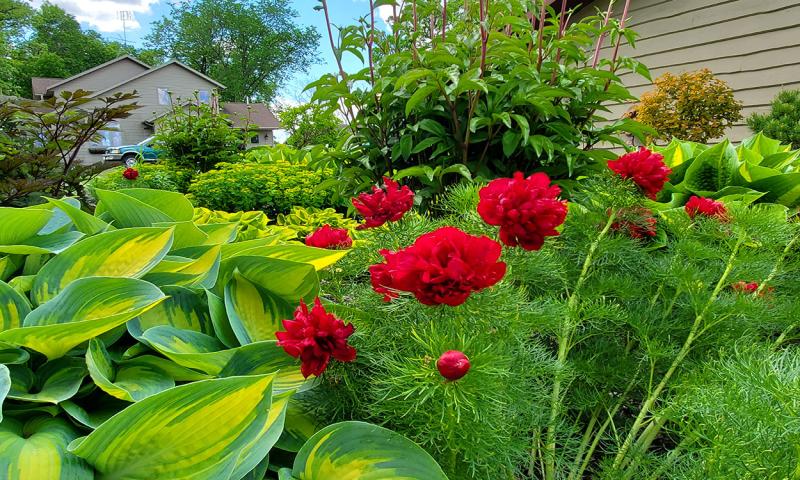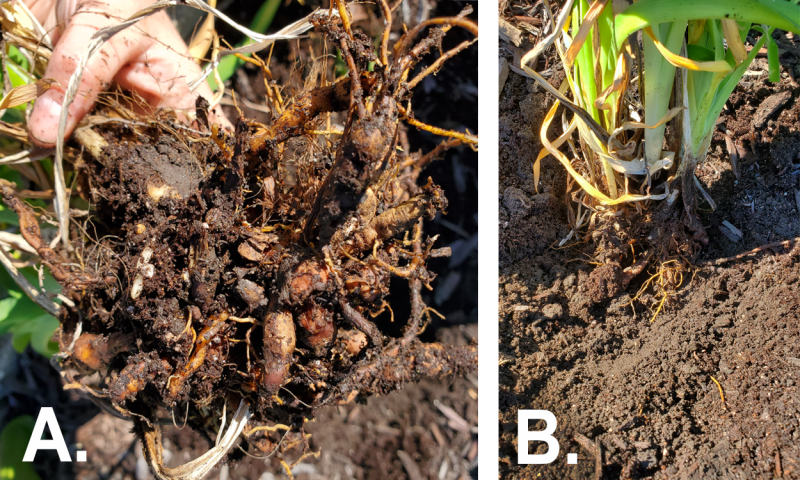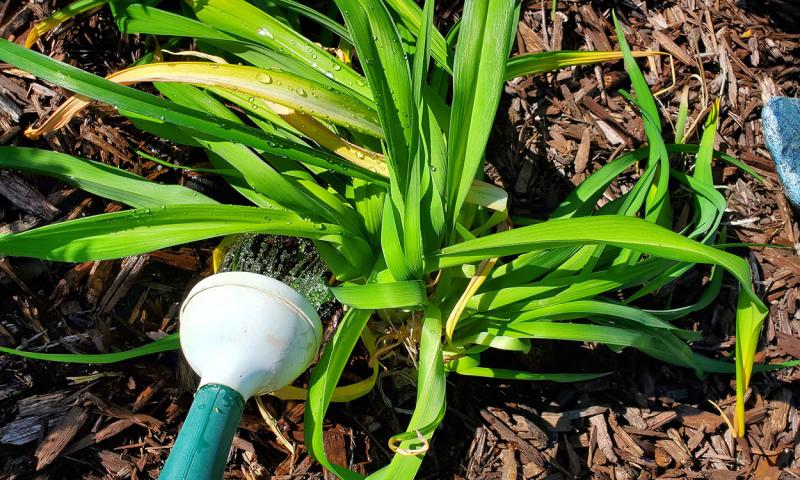
Written by Cindy Schnabel, South Dakota State University (SDSU) Extension Horticulture Assistant and Master Gardener, and Kristine Lang, Assistant Professor and SDSU Extension Consumer Horticulture Specialist.
Many beautiful perennials are hardy to South Dakota, and with the right care, they will come back year after year. There is no constant replanting every year, which reduces garden maintenance and expenses. As perennials age they do require maintenance. To maintain robust plants, many perennials benefit from being divided, and spring can be an excellent time to divide popular perennials.
Many perennials should be divided three to five years after they have been planted in the garden. This recommendation varies based on how quickly a planting grows in the garden. If perennials are overgrown or overcrowded, they may show signs of stress, such as producing smaller leaves and fewer blooms. The middle of the plant might start to die back. Overgrown perennial plantings lead to reduced airflow, which can increase the plant’s susceptibility to foliar diseases, such as powdery mildew. Division is a great way to rejuvenate these plantings.
Why Divide Perennials in the Spring?

With cooler weather and more-frequent rainfall, spring can provide favorable conditions for divided perennials to form new roots and foliage after being moved in the garden. With less foliage in the spring, there is less risk of transplant shock compared to dividing and moving perennials later in the growing season. Spring division also allows for an entire growing season for plants to recover ahead of winter.
Not all perennials benefit from being divided in the spring. In general, late-summer or fall-blooming perennials respond best to spring division and may still bloom the same season they are divided. Spring and early-summer blooming plants should be divided after they have bloomed (late-summer into early-fall) so that the plant is not exhausting resources on bloom production and recovering from division. For example, irises are best divided immediately after blooming to avoid negative impacts on bloom production. Note: Some perennials respond favorably to both spring and fall division.
Below are some popular perennial plants that benefit from spring division; this list is not exhaustive. The University of Minnesota has a curated a much longer list of perennial plants with instructions on when to divide each (How and When to Divide Perennials, UMN Extension).
Perennials to Divide in the Spring
- Aster
- Bee Balm
- Blanket Flower
- Bleeding Heart
- Clematis
- Daylily
- Delphinium
- Dianthus
- Echinacea
- Fern
- Goldenrod
- Hosta
- Liatris
- Milkweed
- Mum
- Ornamental Grasses
- Phlox
- Russian Sage
- Yarrow
How to Divide Perennials in the Spring

Begin dividing perennials in the spring as soon as you can work the soil and new growth is beginning to appear. If the garden soil is dry and compacted, watering the planting one to two days prior to transplanting may loosen the soil and prevent water stress in the plant. A cool, cloudy day is perfect for this task. A hot, sunny day will dry out the roots and stress the plants that are being moved.
Example: Dividing Daylilies
This example shows the tuberous roots of daylilies, which can be divided in the spring (Figure 3). Loosen soil from the root ball of the perennial you are dividing to allow you to see where to separate the plant into individual divisions, allowing for three to five shoots and a healthy set of roots for each division (Figure 3-A). Replant the new division at the same depth it was growing originally, spreading out the roots within the planting hole, and adding enough soil to cover the roots (Figure 3-B). Avoid burying the crown of the plant where the shoots meet the roots.
Steps for Division
- Use a shovel or spade, dig four to six inches away from the base of the perennial plant.
- Gently lift or tip the plant out of the ground.
- Remove the soil from the root system, so you can see the crown and roots of the plant. This can be accomplished by shaking, teasing or loosening the dirt from the clump. If the soil does not break up easily, a gentle stream of water can be used to rinse the soil from the crown and roots.
- To make your divisions, gently loosen or untangle the roots, rhizomes or tubers with your hands, a sharp garden knife or spade. The objective is to separate the parent plant into sections.
- Each new division needs approximately three to five leaves and a healthy number of roots to establish itself; these will typically be collected from the outside edges of the parent plant, where the newest growth is.
- Inspect the divisions to make sure they are healthy with roots that are free from discoloration or signs of rotting. Remove any weeds that have been growing within the clump.
- Keep the divisions in a shaded location with moist roots until they can be replanted. Replanting immediately in the new location is ideal.
- Plant the divisions at the same depth they were growing at originally, with roots spread in the hole and covered with soil. Avoid planting too deep.
- Water new plantings well and add mulch to conserve moisture.

In Summary
Perennials benefit from division, giving you more young, healthy, vigorous plants. This helps you fill in holes in your landscape or establish a new perennial bed. Dividing perennials is an easy, inexpensive and reliable way to propagate your favorite perennials and keep them growing for years.
References and Resources
- Armitage, A. 2020. Herbaceous Perennial Plants
- Wiesenhorn, J. 2019. How and When to Divide Perennials.
Special thanks to Tim Schreiner, SDSU Extension Master Gardener Volunteer, for editing this article.


